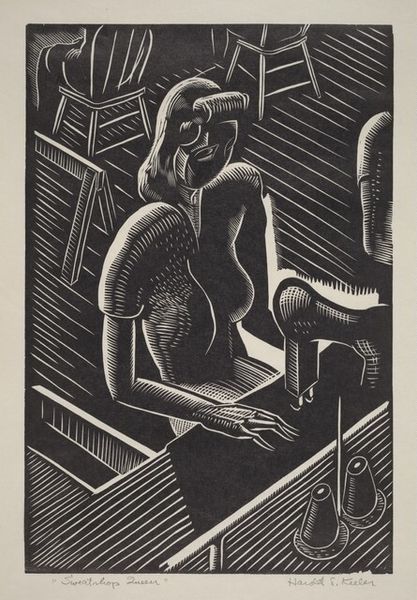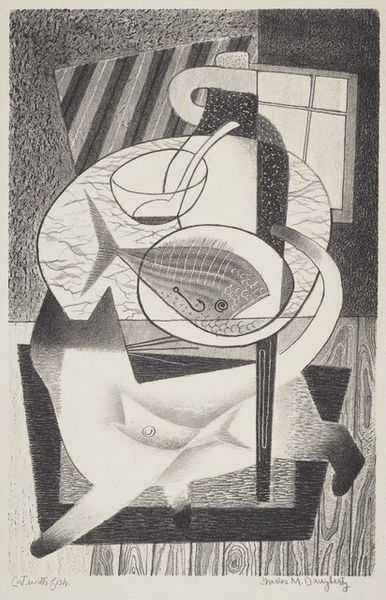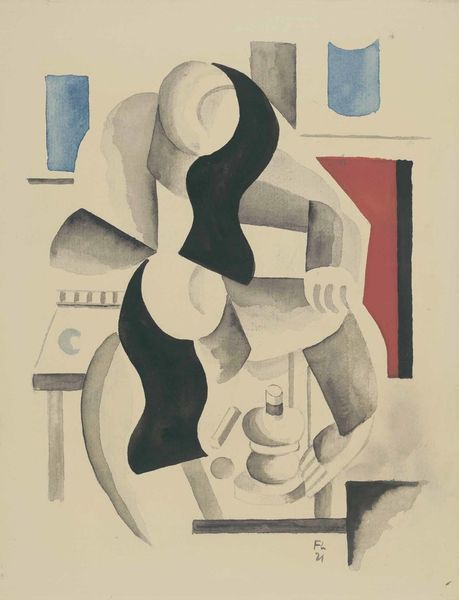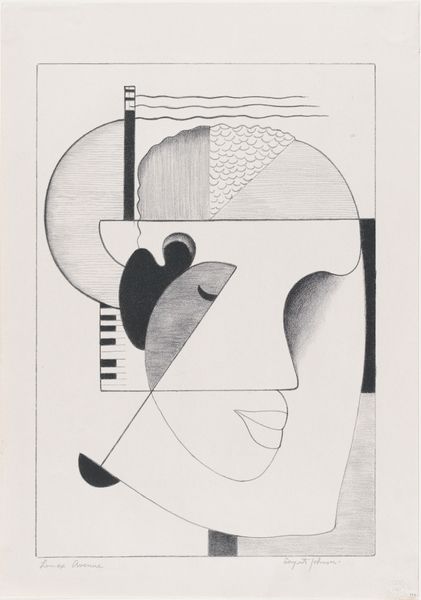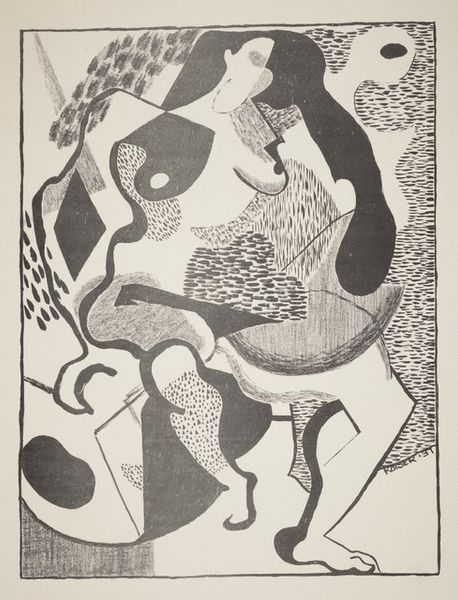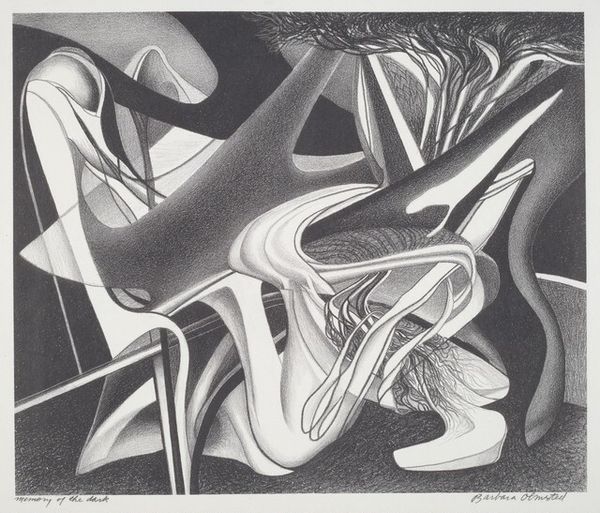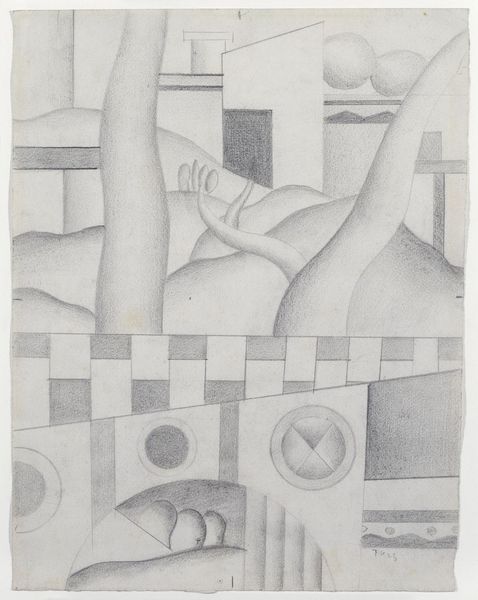
drawing, print, graphite
#
drawing
#
narrative-art
# print
#
caricature
#
figuration
#
geometric
#
abstraction
#
graphite
#
cityscape
#
surrealism
#
modernism
Dimensions: image: 202 x 165 mm plate: 265 x ca. 210 mm sheet: 405 x 301 mm
Copyright: National Gallery of Art: CC0 1.0
Curator: Seymour Fogel created this graphite drawing, "Untitled (Air Raid)," in 1940. It is striking. What is your immediate response? Editor: Well, visually, it’s a potent display of contrasting geometric forms against softer, rounded figures, all rendered in a tight, controlled monochrome. It evokes a strong sense of unease, perhaps a prelude to something sinister. Curator: Indeed. Consider the time. This piece was created during the start of World War II. Seen through that lens, it speaks powerfully about vulnerability and societal breakdown. The abstracted cityscape and falling figure on the left, in conjunction with the central seated figure covering its face suggests a premonition, maybe trauma in the face of imminent devastation. Editor: The semiotics of those geometric forms are very compelling, but I see a more internal fracturing represented here. Look at how the geometric shards intersect with the figure, almost as if they are physically manifesting psychological fragmentation. The artist's style embraces surrealism but also echoes the simplification and geometric discipline often seen within modernism. Curator: That is insightful. However, I would say Fogel goes beyond the solely formal. This piece reflects anxieties surrounding identity and the external threat of war—how national conflict invades the psyche and distorts the individual experience. The falling silhouette also brings forth a kind of body horror while thinking about forced removal from the context of cityscapes and modernity. Editor: Perhaps. But by reducing it solely to the context of war, are we not limiting the work's ability to speak more broadly about societal anxiety and the breakdown of order? Even without knowing its history, its tension arises primarily from its internal visual logic—the push and pull between organic shapes and stark geometry. The figure and city architecture have shared and invaded each other. Curator: You're right, it definitely allows multiple readings! Looking closely we could examine our own moment—social precarity amid globalization, technological advancement, and environmental fragility all reflected back to us through visual art. The work acts as both a mirror reflecting society's fractures, as well as an echo to events that had actually unfolded. Editor: A truly dynamic, unnerving image. Its power clearly resonates on multiple levels, forcing a complex reading. Curator: It certainly prompts deeper engagement. Fogel’s composition presents itself as a compelling meditation on our present, but also prompts introspection as viewers confronting times of radical change.
Comments
No comments
Be the first to comment and join the conversation on the ultimate creative platform.
